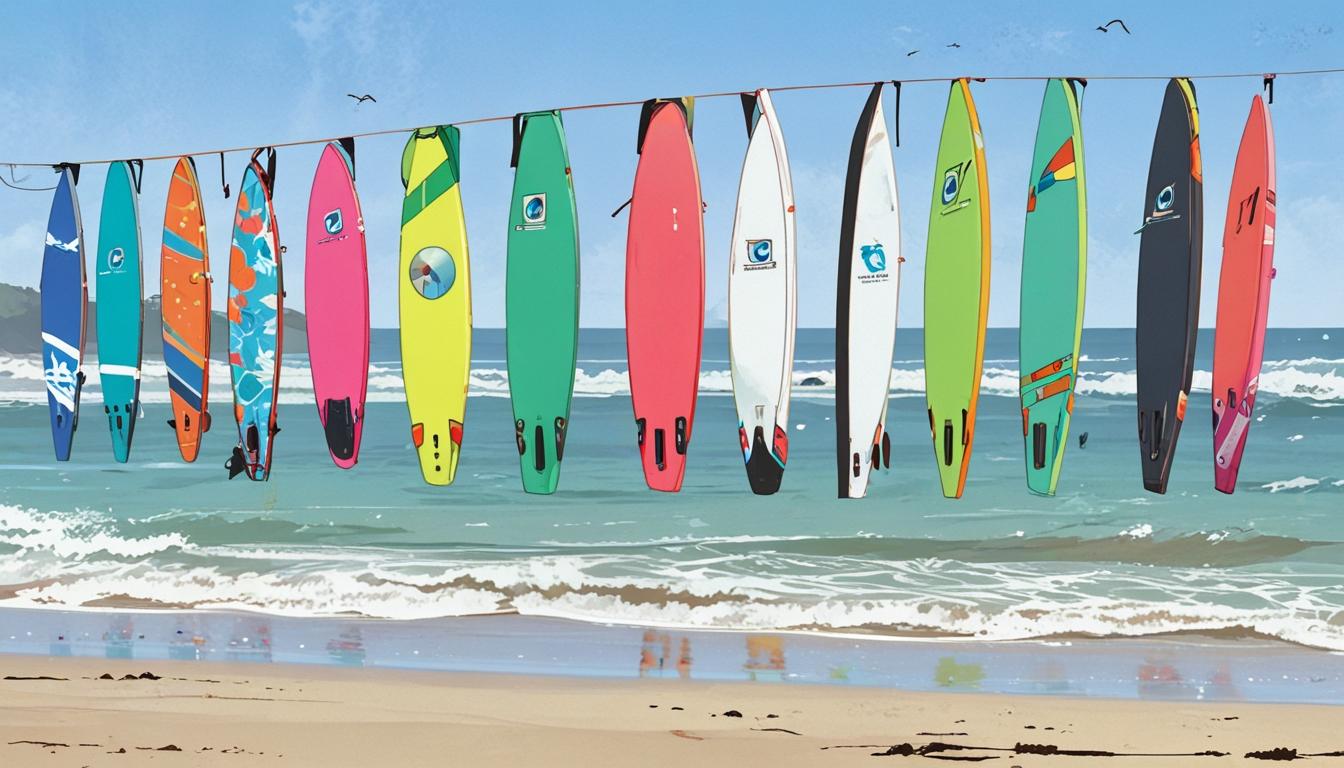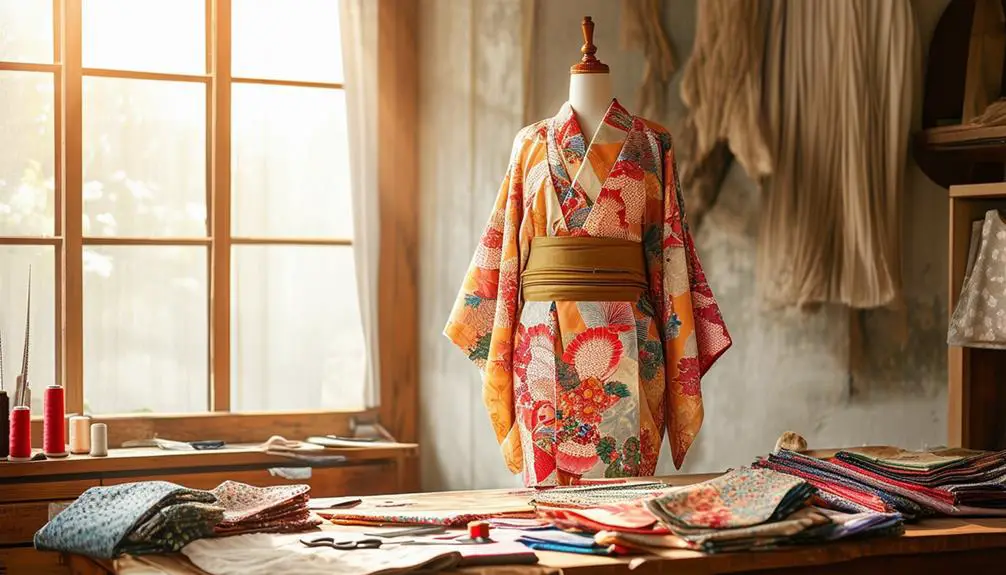In the 1950s, women's silk evening gowns were more than just attire; they represented glamour and empowerment. You'll notice their luxurious materials, like silk chiffon and satin, which created stunning drapes. Fitted bodices highlighted the iconic hourglass silhouette, while voluminous skirts celebrated feminine curves. Popular designers, such as Christian Dior and Coco Chanel, offered exquisite details—think intricate beading and floral embellishments—that defined the era's elegance. The vibrant colors reflected post-war optimism and sophistication, urging you to embrace the spirit of the time. There's plenty more to uncover about the significance of these gowns and their cultural impact.
Overview of 1950s Fashion
The 1950s fashion landscape burst with vibrant styles that defined a generation and reshaped women's attire. Central to this era was the iconic hourglass silhouette, heavily influenced by Christian Dior's revolutionary "New Look." Silk evening gowns became the epitome of elegance, featuring fitted bodices that accentuated the waist and voluminous skirts that flowed gracefully. The luxurious feel of silk, satin, and taffeta created an exquisite drape, further enhancing the feminine designs that dominated the decade. Vintage clothing labels from this era often highlight the craftsmanship and quality of the garments, with specific indicators that collectors seek out for authenticity, making these pieces highly desirable in the market vintage clothing labels.
Color trends flourished during this time, with pastels and bold hues capturing the optimism of post-war society. Floral patterns added a touch of whimsy, while embellishments like lace, sequins, and beading elevated the gowns' glamour, making them perfect for formal occasions. These evening gowns weren't just about aesthetics; they symbolized a cultural shift towards women's liberation, reflecting changing gender roles. Hollywood films and high-profile events, such as the Oscars, showcased these stunning creations, reinforcing the notion that fashion could empower women. Fundamentally, 1950s fashion encapsulated a transformative moment in history, blending artistry with a newfound freedom of expression for women.
Key Characteristics of Silk Gowns
Silk evening gowns of the 1950s stand out for their luxurious textures and masterful designs, embodying the era's elegance and sophistication. These gowns often featured silk satin, chiffon, and taffeta, which contributed to their stunning drape and sheen. You'd notice a quintessential silhouette marked by fitted bodices that accentuated the waist, paired with voluminous skirts that created an hourglass shape, a clear nod to Christian Dior's "New Look."
Common design elements included intricate embellishments like beading, lace overlays, and floral appliqués, enhancing the gowns' opulence and femininity. The color palette ranged from soft pastels to bold floral prints, with black and gold frequently chosen for evening wear to convey sophistication and glamour.
Unique structural features, such as off-the-shoulder necklines and tea-length hemlines, reflect a blend of traditional elegance with modern sensibilities. The combination of these characteristics not only defined the era's fashion but also captured a sense of femininity and grace. Wearing a 1950s silk evening gown, you'd feel both timeless and stunning, a true epitome of the sophisticated style of the decade.
Popular Designers in the 1950s
Fashion in the 1950s was profoundly shaped by the vision of its leading designers, each bringing a unique flair to the silk evening gown. Christian Dior's "New Look" revolutionized women's fashion by emphasizing the hourglass silhouette with defined waists and full skirts. This design made silk evening gowns not just fashionable but highly desirable.
Coco Chanel continued to leave her mark with timeless, elegant designs, favoring simplicity while often utilizing luxurious materials like silk. Meanwhile, Balenciaga pushed the boundaries of traditional gown structures, experimenting with innovative shapes that captivated the fashion world, all while maintaining a commitment to high-quality fabrics.
Givenchy became synonymous with elegance, creating sophisticated evening gowns frequently worn by Hollywood stars, thereby showcasing the allure of silk in glamorous settings. Later in the decade, Oscar de la Renta emerged as a prominent figure, gaining acclaim for his stunning silk evening gowns that highlighted feminine beauty and grace. Each designer contributed to a rich tapestry of fashion, ensuring that silk evening gowns remained a staple of elegance and sophistication throughout the decade.
Iconic Styles and Silhouettes
In the world of 1950s evening wear, iconic styles and silhouettes defined an era of elegance and femininity. One standout silhouette was the hourglass shape, which emphasized the waistline and celebrated feminine curves. Influenced by Christian Dior's revolutionary "New Look," introduced in 1947, silk evening gowns featured fitted bodices and full skirts that exuded grace and sophistication. These gowns often reached tea-length or full-length, perfectly aligning with the decade's cultural trend toward dressing elegantly for formal occasions.
Design elements like lace embellishments, sequins, and intricate beading adorned the gowns, adding layers of glamour and refinement. The vibrant spirit of the post-war era was reflected in the bold hues and pastel shades used in the evening wear, along with floral patterns that conveyed a sense of optimism and joy. Whether you chose a stunning full skirt or a tea-length design, these gowns allowed women to embrace their femininity and express their individuality. The fusion of luxurious fabrics and striking styles in 1950s silk evening gowns captured the essence of a time when elegance was paramount, leaving an indelible mark on fashion history.
Notable Fabrics and Embellishments
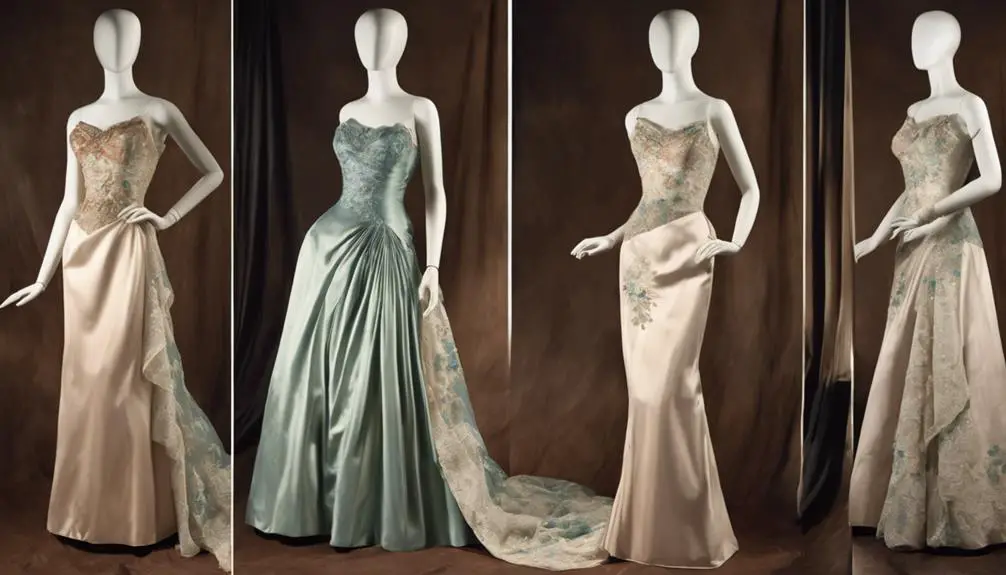
During the 1950s, a variety of luxurious fabrics and intricate embellishments came together to create stunning silk evening gowns that embodied the era's elegance. Silk chiffon, satin, and taffeta were the standout materials, each contributing a distinct texture and sheen that elevated the overall look. The softness of silk chiffon contrasted beautifully with the structured silhouettes achieved through corsetry and petticoats, which were essential in accentuating the coveted hourglass figure.
Embellishments played a vital role in defining these gowns. Intricate beading and lace appliqués adorned many pieces, adding a touch of glamour and visual interest that caught the eye. Floral patterns flourished during this time, often splashed across silk fabrics in vibrant colors, reflecting the era's joyful spirit. Additional elements like bows, ruffles, and layered skirts enhanced the femininity of the designs, making them suitable for formal events where elegance was paramount.
These combinations of fabrics and embellishments not only showcased the craftsmanship of the time but also highlighted the cultural shift towards a more expressive and romantic approach to women's fashion, setting the standard for evening wear in the decades to follow.
Price Ranges of Vintage Gowns
The allure of vintage 1950s silk evening gowns is not only seen in their exquisite craftsmanship but also reflected in their price ranges, which vary considerably based on brand, condition, and design features. Typically, you'll find these gowns priced between $95.00 and over $248.00. High-end designer pieces, like those from Christian Dior or CEIL CHAPMAN, often command prices exceeding $248.00, showcasing their couture status and rarity.
On the more accessible end, 1950s silk chiffon cocktail dresses can be found for as low as $39.99 to $100.00, making them a great option for budget-conscious buyers. However, keep in mind that additional shipping fees may apply, typically ranging from $8.00 to $10.49, unless the seller offers free shipping.
For savvy shoppers, some vintage gowns come with "or best offer" options, allowing for negotiation. This flexibility can help you secure a beautiful dress at a price that fits your budget. Understanding these price ranges and factors will empower you to make informed decisions as you search for the perfect vintage silk evening gown to add to your collection.
Shipping Options and Offers
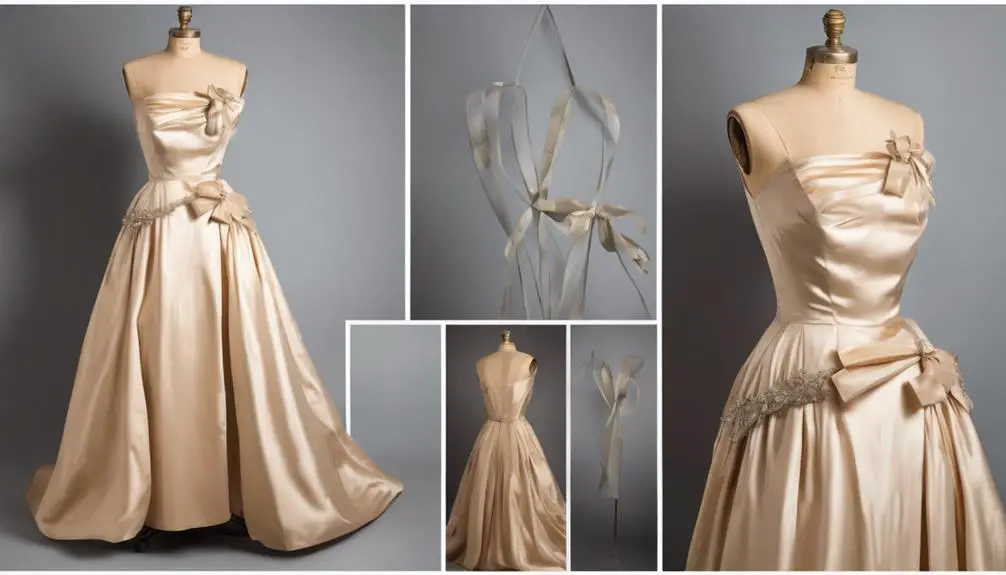
When searching for vintage silk evening gowns from the 1950s, you'll encounter a variety of shipping options that can impact your purchasing experience. Some sellers offer enticing free shipping, while others may charge between $8 to $10.49. It's essential to take into account these costs alongside the gown's price to guarantee you're making a savvy investment.
You'll often find listings featuring "or Best Offer" options, allowing you to negotiate and possibly secure marked down prices. This flexibility can lead to significant savings, especially in a vintage market where demand remains high. Many gowns attract multiple watchers, reflecting their desirability and hinting at potential competition for your favorite piece.
For those living nearby, local pickup is a convenient alternative to shipping, letting you save on costs while bringing home a piece of fashion history. Keep an eye out for dresses that have been marked down, as these discounts provide an excellent opportunity to snag a beautiful gown without stretching your budget too thin. Understanding your shipping options and offers can elevate your vintage shopping experience, making sure you find the perfect women's silk evening gown that suits both your style and wallet.
Unique Features of Silk Dresses
Silk dresses from the 1950s are renowned for their luxurious feel and stunning visual impact, making them a staple of evening wear. These silk evening gowns often utilized luxurious materials like silk chiffon, satin, and taffeta, which contributed to their elegant drape and sheen. The craftsmanship of this era is evident through intricate embroidery and beading that adorned many dresses, showcasing the attention to detail that defined 1950s fashion trends.
Floral patterns and vibrant colors dominated the designs, reflecting an optimistic and feminine spirit. The hourglass silhouette was a hallmark of these gowns, emphasizing fitted bodices that sculpted the waist and voluminous skirts that added drama. This combination flattered the female form and created a striking appearance on any occasion.
Unique design elements, such as side slits and tiered silhouettes, enhanced the visual appeal and sophistication of silk dresses, setting them apart from other styles. The intricate detailing and luxurious materials not only accentuated the beauty of the wearer but also represented the social ethos of the time, where elegance and femininity were paramount. Embracing these features, silk evening gowns became a symbol of grace and glamour in the 1950s.
Cultural Impact on Fashion
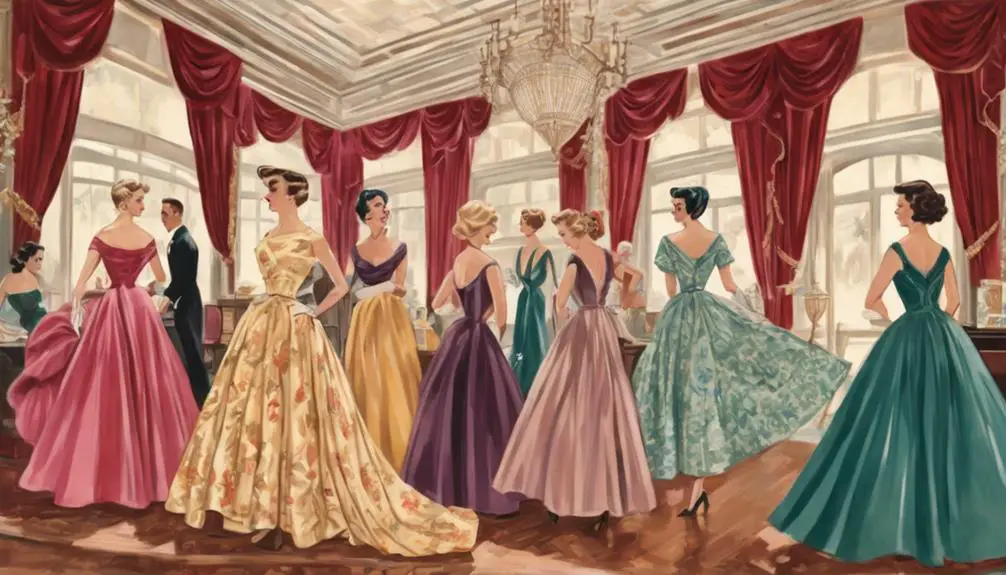
Amidst the post-war optimism of the 1950s, evening gowns became a powerful cultural symbol, mirroring the era's economic prosperity and shifting societal norms. These silk evening gowns reflected not just fashion, but a broader cultural shift towards glamour and self-expression in a rapidly evolving society. Influenced by icons like Audrey Hepburn and Grace Kelly, the hourglass silhouette became synonymous with elegance.
Here are four key aspects of this cultural impact:
- Christian Dior's "New Look": Revolutionized women's fashion with voluminous skirts and fitted bodices, setting the standard for evening wear.
- Hollywood Influence: Stars shaped public perceptions of glamour, encouraging women to embrace sophisticated styles at social gatherings.
- Women's Liberation Movement: As gender roles began to shift, evening gowns transformed into symbols of empowerment and personal expression.
- Social Events: The rise of occasions like the Oscars showcased extravagant gowns, further fueling the desire for luxurious fashion.
In this way, the silk evening gown of the 1950s not only defined a style but also captured the essence of an era marked by cultural shifts and newfound freedom for women.
Care and Preservation Tips
Proper care and preservation of your 1950s silk evening gown is essential to maintain its beauty and longevity. Start by storing your gown in a cool, dark, and dry space. Using a breathable cotton garment bag is ideal, as it protects against humidity and light exposure, both of which can lead to fading and deterioration over time.
When it comes to hanging your silk evening gowns, skip the wire hangers. Instead, opt for padded or wide hangers to help maintain the gown's shape while preventing stretching or creasing of the delicate fabric. Cleaning should be done sparingly; only use gentle dry cleaning methods when absolutely necessary. Frequent washing can weaken the fibers and cause color loss.
Furthermore, always keep your silk away from direct sunlight and heat sources. These can make the fabric brittle and expedite fading. Regularly inspect your gown for signs of damage, such as fraying or discoloration. Address any repairs promptly to prolong its lifespan. By following these preservation tips, you'll be able to enjoy your exquisite silk evening gown for many years to come.
Frequently Asked Questions
What Colors Were Popular for Silk Evening Gowns in the 1950s?
In the 1950s, you'd find jewel tones like emerald green and sapphire blue dominating evening fashion. Pastels also had their moment, with soft pinks and light blues creating a romantic, elegant atmosphere for special occasions.
How Did the 1950S Evening Gown Styles Influence Modern Fashion?
You'll notice that 1950s evening gown styles emphasize elegance and femininity, influencing modern fashion through structured silhouettes, luxurious fabrics, and timeless designs. These elements inspire contemporary designers, blending vintage charm with today's aesthetic innovations.
What Accessories Complemented Silk Evening Gowns During the 1950s?
Silk evening gowns in that era were often complemented by elegant pearl necklaces, delicate gloves, and stylish clutches. These accessories added sophistication, enhancing your overall look while reflecting the glamour and elegance of the time.
Were There Any Significant Fashion Icons Associated With 1950S Silk Gowns?
In the 1950s, icons like Audrey Hepburn and Grace Kelly defined elegance. Their styles showcased luxurious fabric and refined silhouettes, influencing trends. You'll find their timeless looks still resonate in today's fashion, embodying grace and sophistication.
How Did Social Events Shape the Design of Evening Gowns in the 1950s?
Social events influenced evening gown designs profoundly. You'll notice how gatherings demanded elegance, prompting designers to incorporate luxurious fabrics, intricate detailing, and flattering silhouettes, reflecting both societal norms and the desire for sophistication in formal attire.



